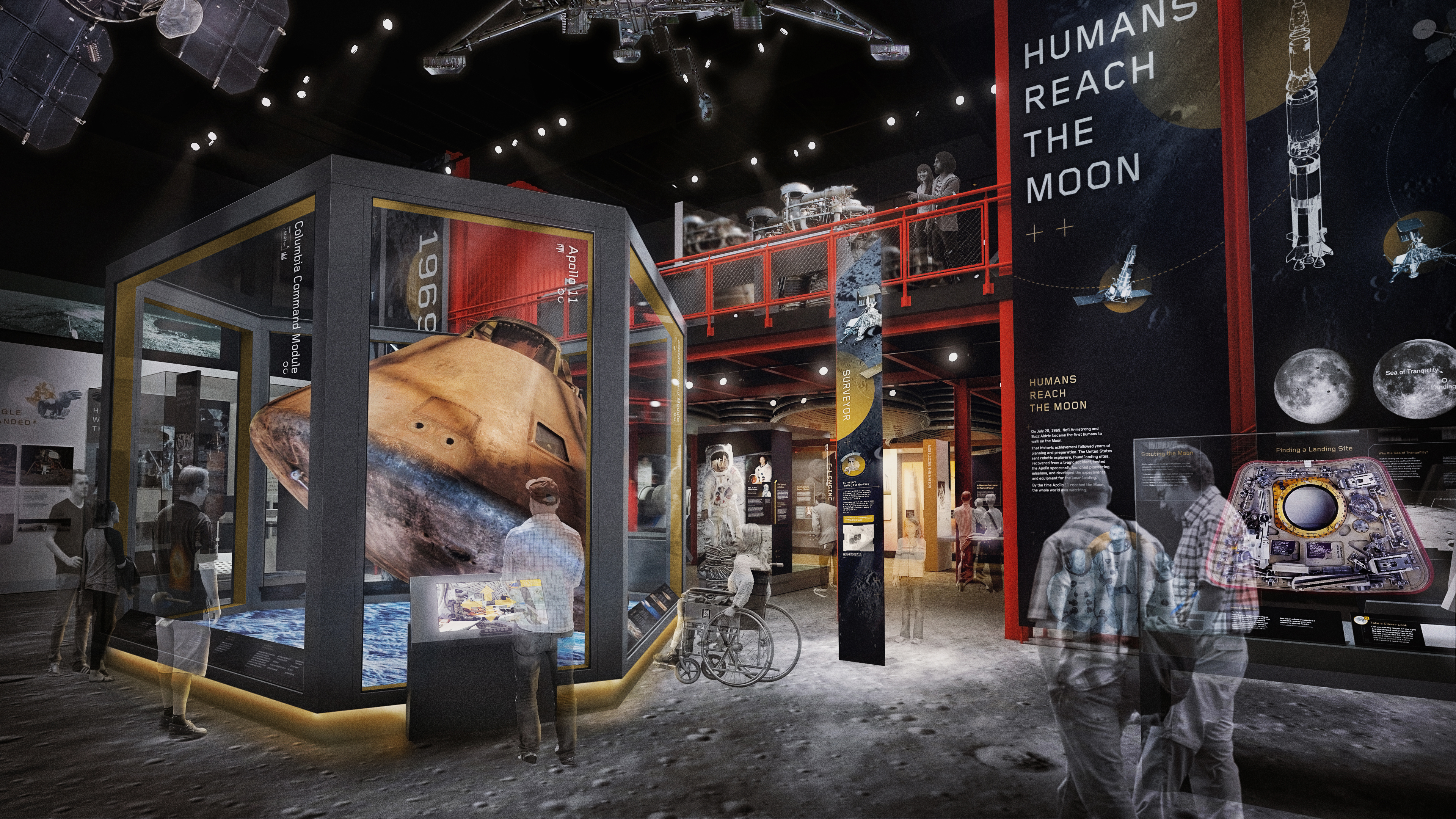
Exhibitions
Exhibitions
Exhibitions on view at the National Air and Space Museum cover topics from the earliest days of flight to modern planetary exploration. Important artifacts from the Museum's extensive collection provide the basis for exhibitions.
With the complete renovation of the National Mall Building about to start, teams across the museum continued in 2018 to develop plans and designs for the 23 new galleries and public spaces that will inspire the next generation of innovators and explorers. At the same time, existing exhibits continued to engage the millions who come through the Museum’s doors each year.
The highly successful Artist Soldiers exhibition drew visitors throughout the year to see how those on the front lines of World War I captured images of their experience. It was part of the Museum’s four-year observance of the 100th anniversary of the First World War.
During the year, final designs were approved for the new galleries that will open on the west end of the museum in 2022. In developing these designs, and in ongoing design work for the remaining galleries, staff examined how to best use artifacts that were previously on display as well as many new ones to tell the story of flight and space exploration for 21st century audiences. That includes looking at how to incorporate the latest research in the galleries’ stories, as well as how to use new technologies in the galleries to engage visitors.
Taking the exhibits outside the museum walls is also a focus as new exhibits are developed. The museum is including in all its designs consideration of how remote digital experiences can link to the physical exhibits in a unified and consistent way.
Shortly after the end of the fiscal year the physical work began in the first of the galleries that will be renovated with removal of artifacts in preparation for the exciting changes ahead.
Spotlight
Ideas That Defy – Transforming America’s Favorite Museum
While completion of the Museum’s renovations is almost seven years away, it’s already possible to get a taste of what a reimagined National Air and Space Museum will look like. One way is through the travelling Destination Moon that is currently touring the U.S. Following stops in Houston, St. Louis and Pittsburgh, it will arrive at the Museum of Flight in Seattle in the spring of 2019.
Ultimately, items from this collaboration between the Museum and Smithsonian Institution Traveling Exhibition Service (SITES) will find their home in the exhibit of the same name in the National Mall building. That includes Apollo 11 Command Module Columbia that had just completed extensive conservation and underwent a 3D scan before going on tour. The exhibit also demonstrates the Museum’s commitment to creative ways to share its collection.
When Destination Moon is opened in the Museum, it will explore the extraordinary combination of motivations, resources, and technologies that made it possible for humans to go to the Moon. The exhibition’s highlights will also include Alan Shepard’s Mercury 7 capsule, Neil Armstrong’s Apollo 11 spacesuit and a Saturn V engine.
Destination Moon will also reach beyond the museum’s walls with extensive online resources and innovative programs, which will be broadcast directly into classrooms across the nation.
Another glimpse of the museum’s future is in the rendering (above) of the One World Connected exhibition. It will tell the story of how flight fostered two momentous changes in everyday life: the ease in making connections across vast distances and a new perspective of Earth as humanity’s home.
Featuring an array of satellites, the exhibit will ask visitors to consider how global interconnection touches their lives and to imagine how advances in technology might impact our future. One World Connected will be part of a suite of three exhibitions (along with Destination Moon and Exploring the Planets) that will celebrate the history – and future – of space exploration and its impact on our world.
Both Destination Moon and One World Connected show the Museum’s commitment to engaging with generations of visitors to come in compelling ways that will inspire them to be the leaders, innovators and explorers of tomorrow. For more on the effort to transform the museum, including renderings of other future galleries, click here.
Destination Moon is made possible by the support of: Jeff and MacKenzie Bezos, Joe Clark, Bruce R. McCaw Family Foundation, Charles and Lisa Simonyi Fund for Arts and Sciences, John and Susann Norton, Gregory D. and Jennifer Walston Johnson and OMEGA.
Transportation services for Destination Moon are provided by FedEx.

